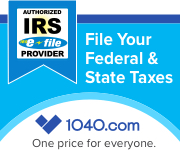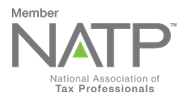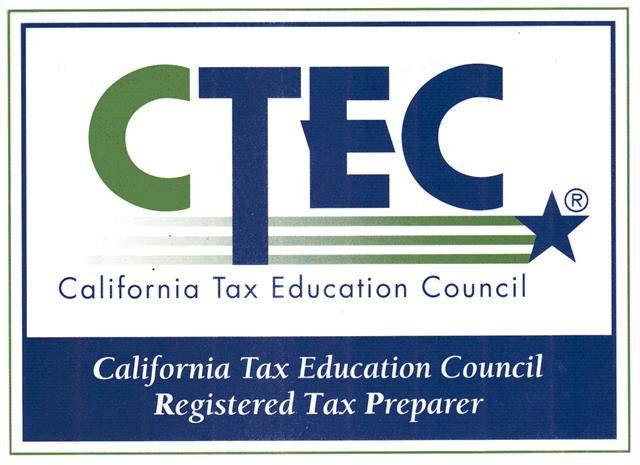
by Ambassador Tax Services, Inc. | Dec 21, 2021 | Tax Tips and News
The Internal Revenue Service has put a little more cushion into its standard mileage rates, so taxpayers won’t have such a big bite taken out of their pockets by fuel prices.
The rates for 2022, which take effect on January 1, will be used to figure the deductible cost of operating a vehicle for business, charitable, medical or moving purposes.

The 2022 standard mileage rates cover the use of a car as well as vans, pickups or panel trucks:
- 58.5 cents per mile driven for business use, up 2.5 cents from the rate for 2021,
- 18 cents per mile driven for medical, or moving purposes for qualified active-duty members of the Armed Forces, up 2 cents from the rate for 2021 and
- 14 cents per mile driven in service of charitable organizations; the rate is set by statute and remains unchanged from 2021.
Business rates are based on an annual IRS study of the costs, both fixed and variable, of operating an automobile. The rates for medical purposes and moving purposes are both based on variable costs.
It’s a different deduction landscape
Taxpayers need to remember that what they can deduct from their taxes is a shorter list than it used to be. The Tax Cuts and Jobs Act, for example, also did away with the miscellaneous itemized deduction for unreimbursed employee expenses.
Also gone is the deduction for moving expense due to a new job. Now, that deduction is limited to active duty members of the Armed Forces who move under orders to a permanent change of station. See Moving Expenses for Members of the Armed Forces for more details.
The IRS reminds taxpayers that they can always opt to calculate the actual costs of using their vehicle, rather than using the standard mileage rates.
Taxpayers have to use the standard mileage rate in the first year their car is available for business use. After that, they can use either the standard mileage rate or actual expenses. If the vehicle is leased, however, they’re locked into the standard mileage rate for the entire lease period—including renewals—if that’s what the taxpayer chose at the beginning of the lease process.
The optional standard mileage rates and the maximum vehicle cost to figure the allowance under the Fixed and Variable Rate (FAVR) plan, are contained in Notice 22-03, which also contains other vehicle-related information.
Source: IR-2021-251
– Story provided by TaxingSubjects.com
![Cyber Security Essentials for Tax & Accounting Firms [Webinar]](https://ambtaxes.com/wp-content/uploads/2021/12/cyber-security-essentials-for-tax-accounting-firms-webinar.png)
by Ambassador Tax Services, Inc. | Dec 21, 2021 | Tax Tips and News
How do you protect your tax business from cybersecurity threats?
The months leading up to filing season are packed with studying tax law changes, learning software updates, training seasonal staff, and—of course—the holidays. During the pre-season hustle, it’s easy to forget one of the most important ingredients for a successful tax business: an up-to-date data security plan.
To help tax professionals get the information they need to avoid the latest data security threats, Drake Software sponsored a webinar hosted by Right Networks Director of Firm Technology Strategy Roman Kepczyk, CPA, CITP, CGMA—who has also been a technology consultant for more than 400 CPA firms.
In “Cyber Security Essentials for Tax & Accounting Firms,” Kepczyk covers a number of critical topics:
- In the News: Cyber Headlines
- Threat Awareness
- Cyber Security-It’s the Law!
- Proactive Solutions
- What to Do if You Suspect a Breach
- Minimize Your Firm’s Exposure
To watch the webinar, visit RightNetworks.com/Webinar-Archive-Cybersecurity-Essentials.
– Story provided by TaxingSubjects.com

by Ambassador Tax Services, Inc. | Dec 18, 2021 | Tax Tips and News
Drake Software, LLC (“Drake”) is aware of the recently disclosed Apache Log4j Remote Code Execution Vulnerability, and has taken the following steps to ensure the continued protection of its operations and customers.
Actions
Upon receiving cybersecurity threat intelligence reports last week regarding this vulnerability, Drake’s Operations and Cybersecurity teams began investigating potential impacts to our systems, products, and services and implementing proactive risk mitigations. The following are examples of some of the actions taken:
- Information about the Apache Log4j vulnerability was collected from sources such as the Cybersecurity & Infrastructure Security Agency, Apache Software Foundation, and crowdsourced data collected on Github
- Potential use of Log4j in Drake’s software products was assessed
- Drake network perimeter defenses were tuned to explicitly identify and block log4j exploit attempts
- Potential exposures in third-party software, systems, and services were investigated
- Drake’s security event tracking and alerting system was configured to alert on log4j exploit attempts and indicators of system compromise
- Daily security vulnerability scans were configured to hunt for vulnerable systems within Drake’s networks
- A third-party cybersecurity consulting team was brought in to perform external security testing
Results of Analysis
- Products
- Drake’s products are not directly susceptible to the Log4j vulnerability. Drake does not incorporate Log4j code into the software it develops, nor does it use log4j for logging functions in online products.
- Administrative Infrastructure
- Some third-party software products used in Drake’s internal operations were identified as having potential exposures. These systems were, and continue to be, isolated from Internet exposure, and have been scheduled for patching as vendors release their fixes. Drake has found no indication of system compromise associated with the Log4J vulnerabilities in Drake’s environment.
- Third-party Service Providers
- Drake has found no indication that third-party services, relied upon by Drake, have had a compromise associated with the Log4J vulnerabilities.
Ongoing Vigilance
Drake expects this issue to evolve over time, and will continue to actively monitor internal operations and third-party software, system, and service provider advisories, as well as apply additional recommended mitigations as necessary.
– Story provided by TaxingSubjects.com

by Ambassador Tax Services, Inc. | Dec 17, 2021 | Tax Tips and News
The Internal Revenue Service is moving quickly to do its part in relief efforts targeting tornado victims in Kentucky.
Around December 10, Kentucky residents were hit by a trifecta of terror: tornadoes, severe thunderstorms and flooding. Many small communities were nearly wiped off the map; unfortunately, casualties are still being counted.
The IRS says taxpayers in the affected areas now have until May 16, 2022, to file various tax returns and make tax payments. The extended deadline applies to all taxpayers within the current federal disaster area as declared by the Federal Emergency Management Agency (FEMA), which presently covers Caldwell, Fulton, Graves, Hopkins, Marshall, Muhlenberg, Taylor, and Warren counties.
The IRS says additional counties, once they are included in the disaster declaration by FEMA, will automatically be added to the tax relief package—even if those locations are in neighboring states.
What does the tax relief do?
This tax relief package postpones various deadlines for filing and paying taxes that would have been due starting on December 10. Qualified taxpayers, both individual and business, now have until May 16 to file their returns and pay any taxes that were originally due during the December 10-to-May 16 time frame.
Since 2021 individual income tax returns are ordinarily due April 18 next tax season, the IRS relief package pushes that deadline back to May 16 for the Kentucky storm victims. This would include business return filers who would otherwise have 2021 returns due on March 15 and April 18.
Here are some other provisions of the Kentucky relief package:
- Farmers who choose to skip making estimated tax payments and who usually file their returns by March 1 have until the May 16 deadline to file their 2021 return and pay any tax due;
- Taxpayers in the disaster area have until May 16 to make their 2021 IRA contributions;
- Taxpayers making estimated tax payments can skip their fourth-quarter tax payment normally due on Jan. 8, 2022, and simply include that payment with the 2021 return when they file on May 16;
- Businesses’ quarterly payroll and excise tax returns due January 31 and May 2 now also have a May 16 due date;
- If taxpayers receive penalty notices on payroll and excise tax deposits normally due between December 10 and December 27, those penalties will be abated by the IRS – as long as the deposits are made by December 27.
For more information on a wide variety of returns, payments and other tax-related actions that qualify for the extended deadline, visit the IRS website’s disaster relief page. It’s also the source for the most up-to-date list of counties and states included in the FEMA disaster declaration.
There’s no action needed from taxpayers
The provisions of the IRS relief package are automatic; that is, taxpayers do not have to contact the IRS to either register for relief or to make sure they qualify. IRS systems automatically make that determination, based on the taxpayer’s address of record on file with the agency.
Taxpayers in the disaster area should remember, however, if they get a late-filing or late-payment notice from the IRS with a filing, payment or deposit due date that falls within the December 10—May 16 postponement time frame, they should contact the IRS at the number printed on the notice to have the penalty abated.
Those taxpayers claiming a loss on their taxes from the tornadoes and other storms in the disaster area have two ways to make a claim of uninsured or unreimbursed losses.
Taxpayers can either claim the storm losses in the year that they occurred—meaning 2021 return now due from storm victims by May 16—or they can claim the loss on the return for the prior year, which would be 2020 in this case.
No matter which method taxpayers choose, they should write the FEMA declaration number 4630DR on any return claiming a loss. Publication 547 has details on claiming a disaster-related loss.
For more information on the federal government’s coordinated response to these storms and disaster recovery, visit DisasterAssistance.gov.
Source: IR-2021-248
– Story provided by TaxingSubjects.com

by Ambassador Tax Services, Inc. | Dec 15, 2021 | Tax Tips and News
The IRS, the Independent Sector, and the National Council of Nonprofits are this week reminding non-itemizers that charitable contributions made this year may qualify for a tax deduction. This temporary rule comes from a provision in the Coronavirus Aid, Relief, and Economic Security (CARES) Act that was designed to help cash-strapped nonprofits during the pandemic.
Since an estimated 90 percent of taxpayers take the standard deduction, many could benefit taxpayers and charities stand to benefit. However, the December 31, 2021 deadline for making a cash contribution to a qualifying charity is fast approaching. So, let’s take a look at what the IRS had to say about deducting tax year 2021 charitable contributions.

How much in charitable donations can taxpayers deduct if they take the standard deduction?
The amount of tax year 2021 cash contributions to qualifying charities that taxpayers taking the standard deduction can claim depends on their filing status:
- $300 for individuals
- $600 for married couples filing jointly
While described as “cash,” the IRS points out that qualifying contributions can actually “include those made by check, credit card, or debit card, as well as amounts incurred by an individual for unreimbursed out-of-pocket expenses in connection with their volunteer service to a qualifying charitable organization.” However, agency’s definition doesn’t cover “the value of volunteer services, securities, household items, or other property.”
Keeping that in mind, the agency notes that this temporary deduction has “special recordkeeping rules,” including:
- Obtaining an acknowledgement letter from the charity before filing a return
- Retaining a cancelled check or credit card receipt for contributions of cash
To help taxpayers meet the recordkeeping requirements, the IRS included a link to Publication 526, Charitable Contributions.
How can I find a qualifying charity?
The IRS notes that their Tax Exempt Organization Search tool can help taxpayers find charities that qualify for a tax-deductible donations. The online resource lists numerous databases that users can search, including:
The page also includes several accordion menus that can contain useful information.
Source: IR-2021-247
– Story provided by TaxingSubjects.com




![Cyber Security Essentials for Tax & Accounting Firms [Webinar]](https://ambtaxes.com/wp-content/uploads/2021/12/cyber-security-essentials-for-tax-accounting-firms-webinar.png)







